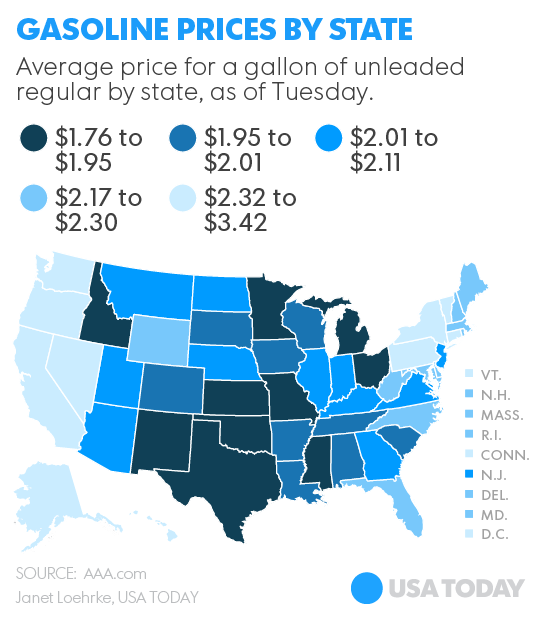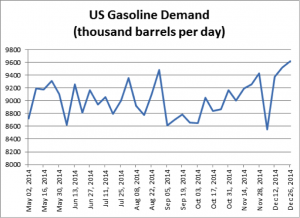Making the case for sustainable energy
Bloomberg and the Business Council for Sustainable Energy are not at all discouraged by the big drop in oil prices. In fact, they say that the move toward non-carbon-based energy is so strong now that it’s taking on an air of inevitability.
That was the conclusion of the third annual Sustainable Energy in America Factbook, released by the council last week and researched and published by Bloomberg New Energy Finance (BNEF). The press conference, held in conjunction with the report’s release, featured an all-star lineup of industry experts, including David McCurdy, head of the American Gas Association; Tom Kiernan, CEO of the American Wind Energy Association; and Mark Wagner, vice president for government relations at Johnson Controls.
“America is in the midst of a sweeping energy transformation,” the report began. “New technologies and concerns about energy security and the future of the world’s climate are together driving rapid change in the U.S. energy economy. … Traditional energy sources are declining while natural gas, renewable energy and energy conservation are playing a larger role.”
On the possibilities of replacing gasoline — despite its cheaper price — the council was particularly optimistic about the future of electric cars. “Here’s why cheap oil won’t stop electric vehicles:”
“1. Since 2010 there’s been no relationship between gasoline price and electric vehicle sales, according to BNEF analyst Alejandro Zamorano Cadavid. Electric cars are still in the early-adopter phase, and someone paying $100,000 for a Tesla doesn’t care that gasoline costs a buck less per gallon.
“2. In Europe, gas taxes are so high that it makes the price of crude less important. If you’re in Norway, and gas drops from $10 a gallon to $9 a gallon, electric cars are still a deal.
“3. In China, the government is stepping up support for electric vehicles. Pollution has become a serious problem, and the Chinese are getting serious about fixing it. Plug-in sales are soaring.”
Of course, the council is taking a world perspective. The report mentions, for instance, that fossil-fuel subsidies outpace renewable-energy subsidies by 6 to 1. Most of those subsidies, however, are government edicts in developing nations that reduce the price of gasoline to consumers. In Venezuela, for example, gasoline is being sold at 2 cents per gallon. But this is left over from Hugo Chavez’s policies of using the country’s oil production to provide almost free gasoline to the people under the principle of “sharing the wealth.” This policy has proved disastrous, and the low price of world oil has practically bankrupted the country.
The same pattern has occurred in other countries, but low oil prices are proving to be a boon to governments. “First, a number of countries, including India and Indonesia, have used the price drop as cover to cut gasoline subsidies that were weighing town their budgets,” says the report. “Second, countries that include China have pocketed the savings from cheaper oil by increasing gasoline taxes to make up the difference.”
The pattern in the United States, where there is a freer market, has apparently been that cheaper gas prices are not cutting into the progress of plug-in cars and hybrids. They have risen to almost 2 percent of all car sales, after languishing well below 0.5 percent only three years ago. There may be a temporary drop now due to low gasoline prices, but the prices are not likely to stay down, and sales will probably bounce back. This is particularly true since both Tesla and GM are planning to introduce all-electrics to the mid-range market by 2017. Both companies are planning to market electrics in the $35,000 range, which will remove them from the “first-adopter” stage.
Of course, switching to electric doesn’t mean much if the electricity is producing the same old pollution, but there the Business Council says that the switch to cleaner natural gas — and particularly solar electricity — will make electric cars even more attractive. The council notes that oil plays very little role in the generation of electricity, and that electricity price are still going up, which makes solar electricity even more attractive. “Solar . . . will be the world’s biggest single source [of electricity] by 2050, according to the International Energy Agency.”
Although the report doesn’t mention it, improvements in cellulosic ethanol will revolutionize that market as well. And there is always the possibility that we may take advantage of our abundant natural-gas resources to convert gas to methanol, another cheap and clean substitute for gasoline.
Altogether, it does not appear that the temporary drop in oil prices is going to slow the effort to produce cleaner, cheaper energy that moves us away from dependence on foreign oil sources. That’s good news all around.



